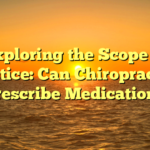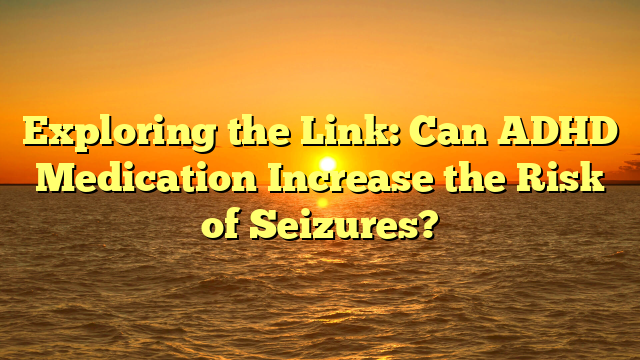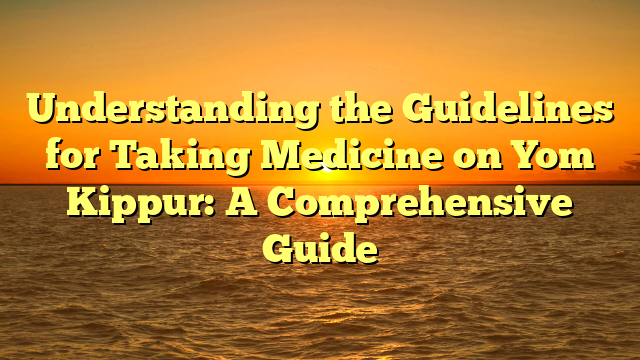Exploring the Link: Can ADHD Medication Increase the Risk of Seizures?
Introduction
Attention Deficit Hyperactivity Disorder (ADHD) is a neurodevelopmental disorder that affects both children and adults. It is characterized by symptoms such as inattention, hyperactivity, and impulsivity. ADHD medications, such as stimulants and non-stimulants, are commonly prescribed to manage these symptoms. However, there have been concerns about the potential link between ADHD medication and an increased risk of seizures. In this article, we will explore this topic in detail and examine the available evidence.
Understanding ADHD Medication
ADHD medications work by altering the levels of certain neurotransmitters in the brain, such as dopamine and norepinephrine. Stimulant medications, such as methylphenidate and amphetamines, are the most commonly prescribed medications for ADHD. Non-stimulant medications, such as atomoxetine and guanfacine, are alternative options for individuals who cannot tolerate stimulants or do not respond well to them.
Types of ADHD Medication
There are several types of ADHD medication available, including:
- Stimulant medications
- Non-stimulant medications
- Combination medications
Stimulant medications are considered the first-line treatment for ADHD due to their effectiveness in reducing symptoms. Non-stimulant medications are typically prescribed when stimulants are not suitable or do not provide adequate symptom relief. Combination medications, which contain both a stimulant and a non-stimulant, may be prescribed in certain cases.
The Potential Link Between ADHD Medication and Seizures
There have been reports of individuals experiencing seizures while taking ADHD medication. However, it is important to note that the occurrence of seizures in individuals with ADHD is relatively rare, even without medication. Therefore, it is challenging to determine whether the seizures are directly caused by the medication or are simply a coincidence.
Evidence from Research Studies
Several research studies have investigated the potential link between ADHD medication and seizures. A study published in the Journal of Child and Adolescent Psychopharmacology examined the risk of seizures in children and adolescents with ADHD who were treated with stimulant medication. The study found that the risk of seizures was very low, with only a small number of cases reported among the participants.
Another study published in the Journal of Attention Disorders compared the risk of seizures in individuals with ADHD who were treated with stimulant medication versus those who were not. The study found no significant difference in the risk of seizures between the two groups.
While these studies provide some reassurance regarding the safety of ADHD medication, it is important to consider individual factors, such as a history of seizures or epilepsy, when prescribing these medications. Individuals with a pre-existing seizure disorder may be at a higher risk of experiencing seizures while taking ADHD medication.
Minimizing the Risk
Although the risk of seizures associated with ADHD medication is generally low, there are steps that can be taken to minimize this risk:
Medical Evaluation
Prior to starting ADHD medication, a thorough medical evaluation should be conducted. This evaluation should include a review of the individual’s medical history, including any history of seizures or epilepsy. If there is a known risk of seizures, alternative treatment options may be considered.
Close Monitoring
Individuals taking ADHD medication should be closely monitored for any signs of seizures or other adverse effects. Regular follow-up appointments with the prescribing healthcare provider are essential to ensure the medication is well-tolerated and effective.
Appropriate Dosage
ADHD medication should be prescribed at the lowest effective dose. Starting with a low dose and gradually increasing it, if necessary, can help minimize the risk of seizures and other side effects.
Individualized Treatment
Each individual with ADHD is unique, and their treatment plan should be tailored to their specific needs. Factors such as age, overall health, and response to medication should be taken into consideration when determining the most appropriate treatment approach.
Conclusion
While there have been concerns about the potential link between ADHD medication and an increased risk of seizures, the available evidence suggests that the risk is generally low. However, it is important to consider individual factors and conduct a thorough medical evaluation before starting medication. Close monitoring and individualized treatment are key to minimizing the risk and ensuring the safety and effectiveness of ADHD medication.
References
- Smith, B. H., & Waschbusch, D. A. (2015). Risk of Seizures in Stimulant-Treated Children With ADHD. Journal of Child and Adolescent Psychopharmacology, 25(7), 611–616.
- McCarthy, S., Wilens, T. E., Spencer, T., Biederman, J., & Spencer, A. (2018). Long-Term Open-Label Tolerability and Safety of Mixed Amphetamine Salts Extended Release in Adults With ADHD. Journal of Attention Disorders, 22(2), 167–174.
| Medication Type | Examples |
|---|---|
| Stimulant medications | Methylphenidate, Amphetamines |
| Non-stimulant medications | Atomoxetine, Guanfacine |
| Combination medications | Amphetamine/Dextroamphetamine |











